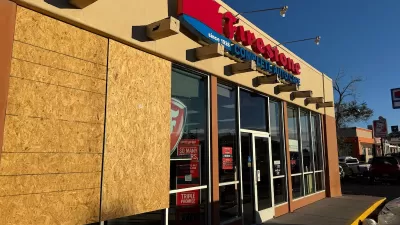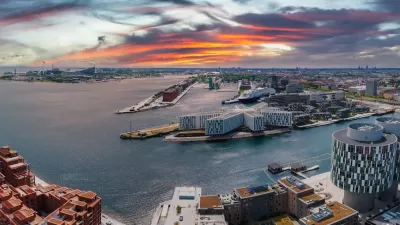Historic preservation still suffers from an image problem, even in the face of all available evidence. Some critics still have the misimpression that preservationists are fussy (even fusty) antiquarians. When I hear complaints about the requirements of historic review commissions, I’m amazed that the griping is often accompanied by a crack about the local “hysterical society.” Even the Wikipedia entry on “historic preservation” contains the passage, “‘historic preservation’ is sometimes referred to as ‘hysterical preservation’.” (And, of course, Wikipedia is ever-infallible).
Historic preservation still suffers from an image problem, even in the face of all available evidence. Some critics still have the misimpression that preservationists are fussy (even fusty) antiquarians. When I hear complaints about the requirements of historic review commissions, I'm amazed that the griping is often accompanied by a crack about the local "hysterical society." Even the Wikipedia entry on "historic preservation" contains the passage, "‘historic preservation' is sometimes referred to as ‘hysterical preservation'." (And, of course, Wikipedia is ever-infallible).
Yet, despite such rhetoric, historic preservation has truly gone mainstream in recent years. Preservation has become an integral part of community policies to support economic development, housing, neighborhood revitalization, and quality of life. All across the nation, preservation is driving economic revitalization and new housing supply.
In my own city, Los Angeles, an Adaptive Reuse Ordinance passed in 1999 has become the city's most successful generator of new housing – resulting in the completion of over 4,300 units, 4,200 more units under construction, and another 3,200 in the development pipeline – mostly in significant historic structures that had sat vacant for years. New legions of preservationist developers have emerged and even the largest, established development firms have learned that preservation adds economic value.
Yet, some planners still view historic preservation as a low priority – a secondary, purely aesthetic concern that necessarily competes with other planning and policy goals. That will require a shift in mindset to understand that historic preservation plays an essential role in shaping great cities.
But perhaps some preservationists may need to change their mindset, as well. Since we've seen that even a tiny minority of nit-picky purists can perpetuate outdated perceptions and hackneyed wisecracks, preservationists must not wallow solely in nostalgia or convey an instinctual resistance to change. The preservation community should continue to articulate an expansive planning vision that embraces innovation, exciting new architecture, and the opportunities of well-managed growth, all while reminding planners and the public that we must anchor our communities firmly in their historic "sense of place."

Alabama: Trump Terminates Settlements for Black Communities Harmed By Raw Sewage
Trump deemed the landmark civil rights agreement “illegal DEI and environmental justice policy.”

Planetizen Federal Action Tracker
A weekly monitor of how Trump’s orders and actions are impacting planners and planning in America.

The 120 Year Old Tiny Home Villages That Sheltered San Francisco’s Earthquake Refugees
More than a century ago, San Francisco mobilized to house thousands of residents displaced by the 1906 earthquake. Could their strategy offer a model for the present?

Ken Jennings Launches Transit Web Series
The Jeopardy champ wants you to ride public transit.

BLM To Rescind Public Lands Rule
The change will downgrade conservation, once again putting federal land at risk for mining and other extractive uses.

Indy Neighborhood Group Builds Temporary Multi-Use Path
Community members, aided in part by funding from the city, repurposed a vehicle lane to create a protected bike and pedestrian path for the summer season.
Urban Design for Planners 1: Software Tools
This six-course series explores essential urban design concepts using open source software and equips planners with the tools they need to participate fully in the urban design process.
Planning for Universal Design
Learn the tools for implementing Universal Design in planning regulations.
Clanton & Associates, Inc.
Jessamine County Fiscal Court
Institute for Housing and Urban Development Studies (IHS)
City of Grandview
Harvard GSD Executive Education
Toledo-Lucas County Plan Commissions
Salt Lake City
NYU Wagner Graduate School of Public Service





























